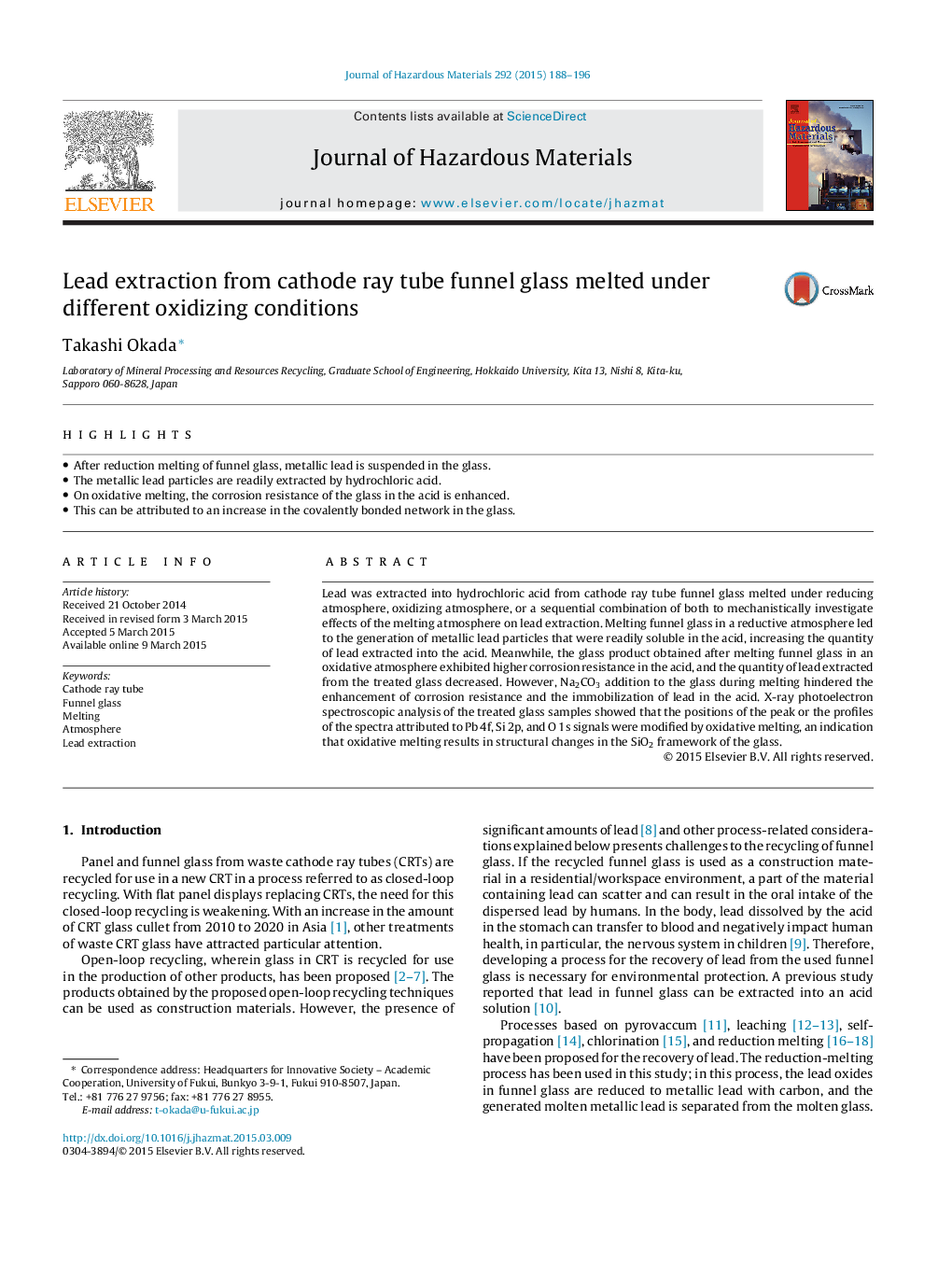| Article ID | Journal | Published Year | Pages | File Type |
|---|---|---|---|---|
| 575891 | Journal of Hazardous Materials | 2015 | 9 Pages |
Abstract
Lead was extracted into hydrochloric acid from cathode ray tube funnel glass melted under reducing atmosphere, oxidizing atmosphere, or a sequential combination of both to mechanistically investigate effects of the melting atmosphere on lead extraction. Melting funnel glass in a reductive atmosphere led to the generation of metallic lead particles that were readily soluble in the acid, increasing the quantity of lead extracted into the acid. Meanwhile, the glass product obtained after melting funnel glass in an oxidative atmosphere exhibited higher corrosion resistance in the acid, and the quantity of lead extracted from the treated glass decreased. However, Na2CO3 addition to the glass during melting hindered the enhancement of corrosion resistance and the immobilization of lead in the acid. X-ray photoelectron spectroscopic analysis of the treated glass samples showed that the positions of the peak or the profiles of the spectra attributed to Pb 4f, Si 2p, and O 1s signals were modified by oxidative melting, an indication that oxidative melting results in structural changes in the SiO2 framework of the glass.
Related Topics
Physical Sciences and Engineering
Chemical Engineering
Chemical Health and Safety
Authors
Takashi Okada,
